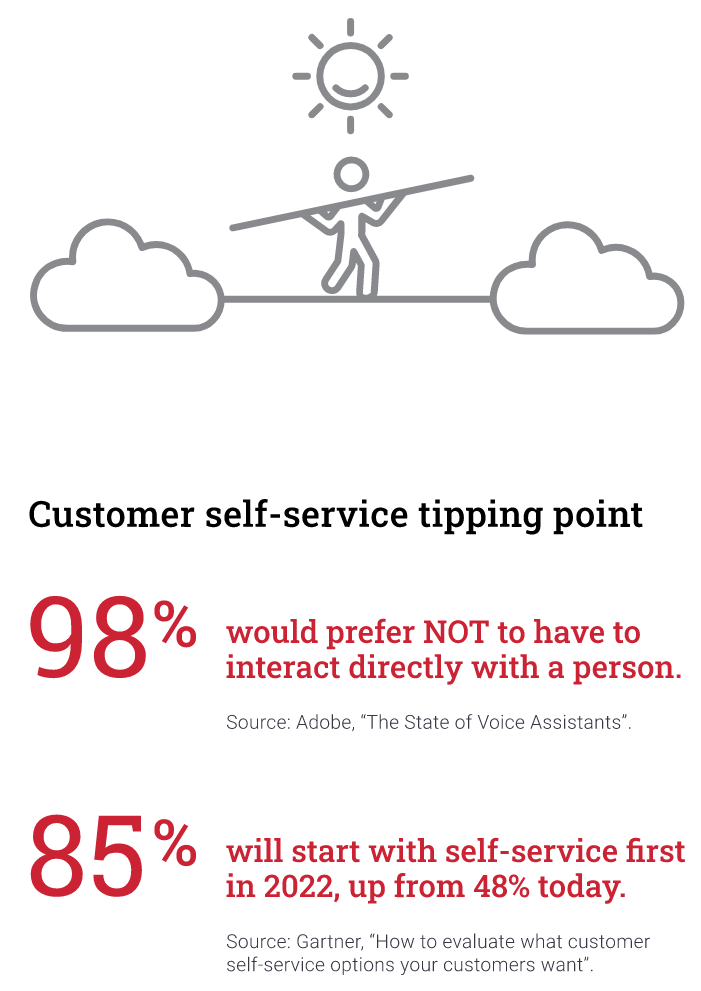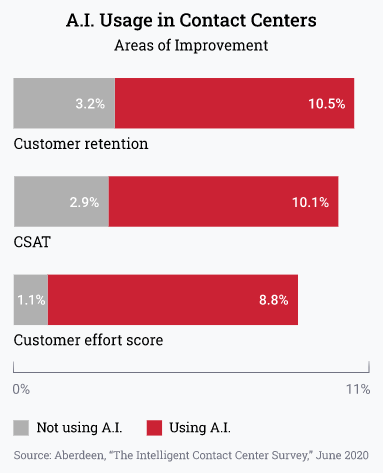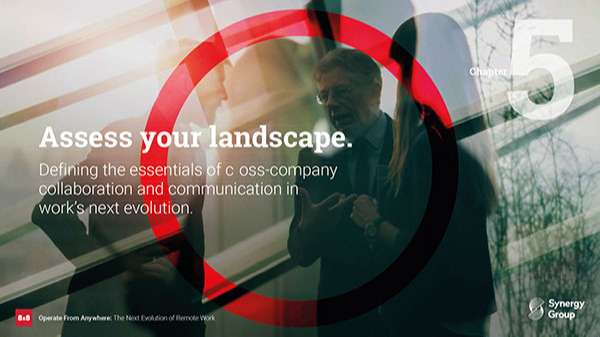The Cost/CX High-Wire Act
The Cost/CX
High-Wire Act
When times are good, contact centers are CX-centric. When times are bad, contact centers are a cost center.
Sound familiar? Contact center veterans will agree that this has long been the prevailing wisdom. But today, as the world economy struggles to find equilibrium (and the US deals with the greatest financial setback in 80-90 years), the idea of prioritizing dollars over customer experience seems outrageous. The reality is that business leaders must prioritize both.
Oh yeah. And do it in a way that’s never been done before.
Download and read Chapter 2 of our eBook for more information.

Download chapter 2 of the Operate From Anywhere eBook.
Your eBook will download or preview dependant on your browser settings.

Nothing but blue skies.
In 2019, Gartner published a survey detailing CEO key priorities and objectives for 2019/2020. At the time—in spite of rising, visible economic challenges—there was no real indicator of impending financial crisis.
In true CEO fashion, mentions related to revenue growth were present, increasing 53% YoY. Mentions of financial controls and cost management were also up. In that same report, however, mentions related to the prioritization and focus on customers decreased 15%. Briefly summarized, CEOs seemed to be focused on revenue growth, profitability, and—in accordance with prevailing wisdom—a little less worried about keeping customers happy.
Then, everything changed.
The digital transformation tightrope.
No one could have prepared for 2020. But for companies behind on digital transformation, IT leaders found themselves walking a precarious tightrope.
Employees were sent home. Call volumes spiked while reduced staff availability (whether due to layoffs or remote work challenges) resulted in increased wait times. Gaps in business communications, customer support and popular meeting platforms grew into large chasms. Overnight, IT leaders found themselves struggling to successfully and securely connect employees and customers. Hybrid models and siloed solutions were pushed to the limits. IT was walking a tightrope, and for many, there was simply no safety net.

The customer experience high-wire act.
Customers today expect fast, frictionless, personalized service. In the midst of a global crisis, the stakes are even higher, and businesses recognize this. According to a June 2020 survey conducted by Aberdeen, 66% of contact centers today still rank improving customer experience results and consistency as their top goal.
Typically, organizations look to tackle this first through automation. Historically, this is not uncommon. The Brookings Institution reports that for each of the three recessions that have occurred over the last 30 years, the pace of automation has increased.
Fortunately, we are at a unique time in which self-service and the use of automation no longer detracts from a contact center’s ability to provide exemplary custom experience. In fact, self-service is now the preferred form of service.
But self-service of the past is not the same thing as the AI-assisted self-service options we see today. We have evolved from auto attendants to basic IVR to a full, intelligent conversational exchange. In June 2020, Gartner updated its “The Use of Conversational AI for Customer Service” report, projecting that 20% of customer service interactions will be handled by conversational agents by 2022 and that 30% of all organizations will utilize AI-enabled process orchestration and intelligence.
It’s fairly easy to quantify the benefits and ROI of conversational AI technology. It’s also easy to understand why IT leaders would feel especially pressured during this time. They were already walking the digital transformation tightrope, when increased pressure to meet customer expectations during a time of crisis elevated that rope to a high wire. AI assisted self-service is all about options; the question is, where to start?


The intelligent answer.
To take advantage of these powerful technologies, you must first start with a cloud solution. Establish what problems you are trying to solve and evaluate how, for example, an intelligent IVR or virtual assistant can help: whether that be to enhance current traditional self-service options, ensure 24/7 availability, or improve efficiency by automating routine calls while freeing up agents time for more complex interactions. The operational and financial benefits can be easily quantified.
When it comes to customer experience, Aberdeen’s June 2020 research shows that adopters of AI-enabled contact center technologies demonstrate clear improvement in customer retention, CSAT, and customer effort score.
Remember, the use of AI assisted self-service doesn’t mean zero live agents, it means better, more effective live agents and faster resolution.
Beyond the high-wire:
The communication-collaboration skywalk
While most customers today first look to self-service to resolve issues, live agents remain a critical second line of defense. Done right, automation frees up those agents to deal with more complex interactions.
Connecting communication and collaboration.
To successfully resolve complex issues, agents often rely on the input and involvement of other individuals, teams and departments within an organization. First call resolution (FCR) is an important KPI for contact centers and is directly correlated to CSAT improvements.
Never before has the ability to communicate and collaborate across an organization been so important in resolving customer issues. When agents are not working physically side-by-side, rapid knowledge-sharing and collaboration become more challenging. According to Aberdeen, more than one in three research respondents cite the lack of collaboration between the contact center and other parts of the business as a roadblock to achieving their customer experience goals.
So why do so many organizations find it difficult to support collaboration?
There is certainly no lack of tools, apps or targeted point solutions. But for IT leaders, success depends on connecting these technologies across the organization in a unified, seamless, and secure way.
This is where a single platform approach to communication and collaboration makes sense. By integrating native voice, video, chat, contact center, and enterprise-class API solutions into one global, secure, reliable cloud communications platform, people are more connected, collaborative and productive no matter where they are in the world.
“Our ticket sales and service team are working at full capacity and function just as if they were sitting next to each other in the offices…”
Brian H.
Senior Director of Tech, Kansas City Royals
Grounded in the new reality.
To walk the high wire of cost, quality, and customer experience, IT leaders need to eliminate silos, facilitate collaboration, and provide intelligent self-service. And they need to do this in a secure, reliable, grounded way that supports the unique requirements of remote agents. Bring business communication, collaboration, contact center, and AI assisted self-service together, and you can effectively operate from anywhere and ensure long-term business survival.

Download chapter 2 of the Operate From Anywhere eBook.
Your eBook will download or preview dependant on your browser settings.







